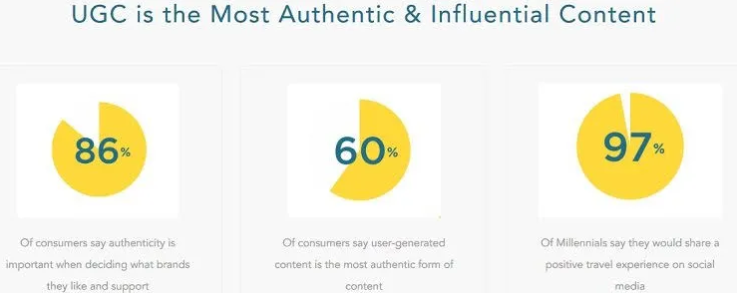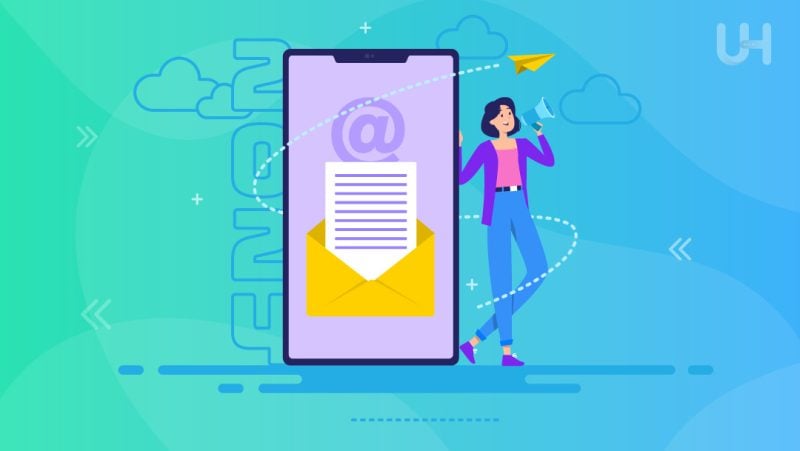In today’s dynamic business environment, emails still stand strong as a bulletproof way for businesses to connect with their audiences. This powerful tool remains one of the most reliable and cost-effective strategies to target customers directly, achieving an ROI as high as $38 for every dollar invested. Not only that, but it plays a significant role in building meaningful and loyal relationships with customers.
However, marketing trends move at the speed of light. Therefore, it’s essential for marketers and business owners to adapt to emerging technologies and evolving customer behavior. In 2024, embracing new email marketing trends empowers you to elevate your campaigns to new heights. So, join us in exploring them and turn every email into a valuable customer touchpoint.
Refine the Use of AI Tools
A year back, artificial intelligence found its way into our daily lives and business reality. In 2024, we have moved from skepticism and fear to getting used to the transformative nature of AI tools. Businesses are focusing their marketing efforts on leveraging AI features in a more refined way. In email marketing, we’ll move from over relying on AI-powered tools to picking the right—and more advanced tools—to deliver the best recipient experience possible and achieve business goals.
By now, a wide range of tools have integrated sophisticated AI features to transform their email marketing strategy. So, the need to learn how to use artificial intelligence more intentionally is more obvious than ever. This means that AI functionalities aren’t meant to replace the human factor. Instead, you should use them to streamline your workflows, get inspired, save time to focus on more creative tasks, and dive deeper into audience insights. In that direction, these are the best ways to use artificial intelligence to elevate your email campaigns:
- Use AI template builders to generate aesthetically pleasing email templates, automate image creation and selection, and refine your email designs for a better visual result.
- Work along with AI writing assistants to create engaging subject lines, craft creative copy, or explore a fresh twist to produced content—always based on your audience, objective, and brand voice.
- Leverage AI solutions for timely email communications and optimized send times. Such technology predicts when recipients are most likely to interact with your email content based on specific actions or special occasions like holidays or birthdays.
- Invest in AI-driven predictive analytics to make data-driven decisions by analyzing past customer interactions and patterns. For instance, such tools identify preferences and behaviors and predict which type of content recipients are more likely to interact with. Based on the data collected, AI-based tools help marketers generate personalized subject lines, product recommendations, or even visual elements to maximize engagement.
Authentic Email Content Is King
Artificial intelligence comes with a catch, though. With its rise in popularity, we’ve reached a point where customers are questioning AI-generated content. Instead, they’re in search of human interactions with brands. With that in mind, authentic email messages shouldn’t just look like they’re written by humans. Now more than ever, your readers need email content that feels humane and genuine.

And one of the most authentic elements to include in your emails is User-Generated Content. Recipients are reluctant to trust messages coming only from brands or their affiliates. When you use content created by customers, be it reviews, testimonials, social media posts, or visual content, other consumers are more likely to relate with your emails.
UGC emerges as a cost-effective strategy for brands to gain access to genuine and engaging email content crafted by their own community. Your team members spend minimum time and effort on this type of content since it’s your customers who do most of the work. Basically, UGC works wonders for your email marketing without you breaking the bank, especially when paired with reliable yet cheap email marketing software. Here are a few ways to promote UGC using a robust email marketing platform:
- Seamlessly integrate UGC in your emails to share real-life applications of your products or services and show the impact they had on your satisfied customers.
- Encourage recipients to share their experiences and stories with you. That way, you get ready-made and valuable content to optimize future email campaigns.
- Use your email marketing solution’s automation features to set up drip emails promoting UGC at specific points in the customer journey. For instance, share customer success stories in your abandoned cart emails to motivate shoppers to cross the purchase-finish line.
- Ask your subscribers to use a special hashtag when they talk about your business on their social media accounts. That way, you can easily pull content from your hashtag and gain access to valuable insights.
- Monitor the performance of your UGC-focused emails through your tool’s analytic capabilities. Use the data collected to track user engagement and optimize your email performance.
Be cautious, though. Whatever you do, always ask for your customers’ consent before using their reviews, photos, videos, or any other type of UGC. Don’t forget to credit the creator, too. Also, it’s always a clever idea to throw in a small incentive to make a win-win situation out of it!
Be Transparent
Using authenticity in your emails goes hand in hand with email transparency. Subscribers appreciate brands that respect them and their need for privacy. Being transparent about how you’re planning to manage their data is essential for building a bridge of trust between your business and your customers.
Not to mention that gaining access to accurate subscriber data is the first prerequisite for creating hyper-personalized emails. So, here are the best practices you can follow to maintain your recipients’ trust:
- Be clear about why you need their email addresses and how you intend to use them, and define the frequency and type of emails you’ll be sending.
- Allow recipients to change their email preferences by clicking on the corresponding link in your emails—and use clear wording for them to know what to do.
- Be open regarding your business practices, especially those related to privacy regulations. And leverage the opportunity to share your values, too.
- If recipients want to unsubscribe, make it as easy and straightforward as possible. Add a clear and prominent unsubscribe option instead of hiding it or using ambiguous wording.
- Update your policies regularly according to current legal requirements or email marketing trends, and keep your recipients informed of any changes made. Utilize the best QR code generator to make a QR code to provide easy access to your privacy policy or opt-out options.
- Create clear CTAs with precise copy so that your readers don’t have to wonder where they’ll be directed upon clicking on them.
Comply With the Latest Regulations
Complying with the latest email marketing regulations is much more a necessity than an email marketing trend. Apart from the ethical part, there are many business reasons to do so. For instance, did you know that 46% of customers decided to switch companies or providers due to their data policies? In 2024 and the upcoming years, customers care about their data and how businesses ensure it’s protected and properly managed.
This means staying up to date with the latest email marketing regulations and data protection laws, as well as implementing all the necessary measures to secure subscriber data. From data collection to explicit consent mechanisms, enhanced data privacy and security should be among your most important concerns. Let’s see the best practices to stay out of trouble while sending emails to your subscribers:
- Invest in secure mechanisms to collect, store, make a free QR Code and handle customer information.
- Get explicit consent from your recipients to gather and manage their data both in your emails and landing pages.
- Activate a double opt-in subscription method for subscribers to verify their email addresses and confirm their consent. Use email verification tools to regularly clean your email list and maintain active subscribers
- Use a reliable email service provider since they are following current email legislation and won’t permit the delivery of inappropriate email content.
- Set up all the mandatory authentication protocols: DKIM, SPF, and DMARC to prove your emails are legit and prevent domain abuse. Especially with the new guidelines announced by Yahoo and Google, this is a key step in secure email communication.
Create Engaging Experiences Using Interactivity
Interactivity is one of these email marketing trends that allows you to get your creative juices flowing. There are many benefits of using interactive elements in your emails, from enhancing recipient engagement to improving your lead generation. Interactive emails are a foolproof way to nudge readers to take action without leaving your email, elevating the recipient experience.
Starting with video content, its use within an email will continue to rise in the years to come. Today’s consumers are more willing to consume information in video format seeing it requires minimum effort on their part. Plus, it’s more likely for them to retain the information and engage with your email when it includes video content. There are many uses to video content, too, such as presenting new products or services, including social proof, sharing brand stories, and more.
The reason why marketers still hesitate to invest in video marketing is that creating and editing videos requires time and resources they don’t have. Another key reason is that they aren’t confident about the value of creating video content:

High-quality images or GIFs are simple alternatives to videos. They share many of the same advantages — such as catching attention—while being easier and faster to create. You might also choose to add elements like countdown timers in emails aiming to evoke urgency. Also, consider including polls and surveys in your emails. Not only are they engaging, but they also offer valuable insights into your audience preferences, that help measure customer satisfaction and personalize future emails.
No matter what you choose, ensure your interactive components are of high-quality and match your brand tone and campaign objective. Also, mind your image and video sizes so that they don’t increase loading times. Lastly, don’t forget to add alt text to your images and captions to videos to ensure accessibility.
Invest in Omnichannel Marketing
The days when we were wondering if we should choose between emails or social media are behind us. In 2024, the road to building stronger customer relationships passes through omnichannel marketing. Businesses will have to focus on meeting their target audience across multiple touchpoints. Email marketing is still the cornerstone of brand messaging. But if you combine it with other communication channels, you will enhance your overall marketing strategy and offer consumers a seamless experience with your business.
For instance, a retail brand could send out personalized product recommendations based on a recipient’s browsing or purchased history. Then, you might target them with follow-up ads on their social media accounts. Another example could be a restaurant chain that wants to run an omnichannel campaign to promote its loyalty program. They decide to dispatch an email including incentives to join it, as well as links to download the mobile app. Once customers sign up, they can accumulate points both in-app and at the chain’s physical locations and redeem rewards.
A key component of every successful omnichannel marketing strategy is maintaining consistency in branding and messaging across platforms, delivering a recognizable brand identity. Where applicable, the omnichannel approach requires a cohesive collaboration between online and offline channels for customers to transition between them effortlessly. Also, monitor analytics to better understand your audience’s behavior and adapt your marketing strategies when needed.
Email Marketing Trends That Will Shape the Future
Email is probably the oldest trick in the marketing playbook. As such, it’s only natural for marketers to think there’s not much more to learn about email marketing. But it’s far from true. Email marketing keeps changing, and staying ahead of the curve is more imperative than ever.
By following the email marketing trends analyzed in this guide, you’ll unlock the immense potential it holds for increased engagement. But remember that this doesn’t necessarily mean you should implement them all at once. Take it one step at a time, test, and experiment to find the ones that better resonate with your audience and objectives. And always adapt your email strategy based on shifting customer expectations and emerging tactics.
Ready to implement these cutting-edge email marketing trends for 2024? Elevate your campaigns with powerful insights and stay ahead of the curve. For seamless email hosting solutions to support your strategy, explore Ultahost’s email hosting services today!








